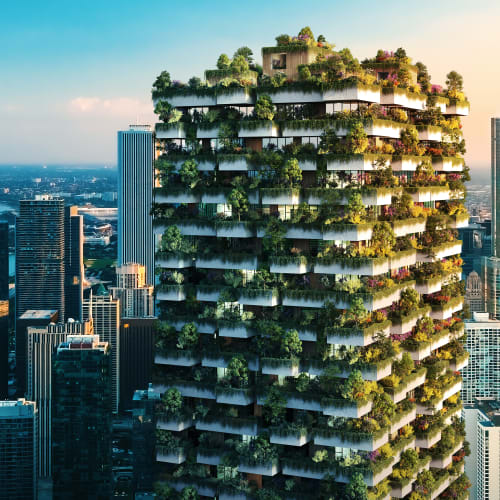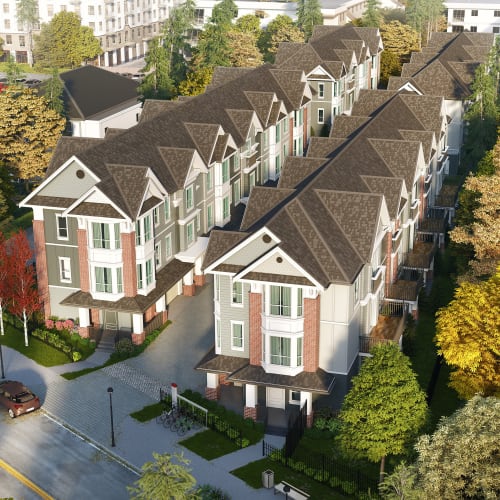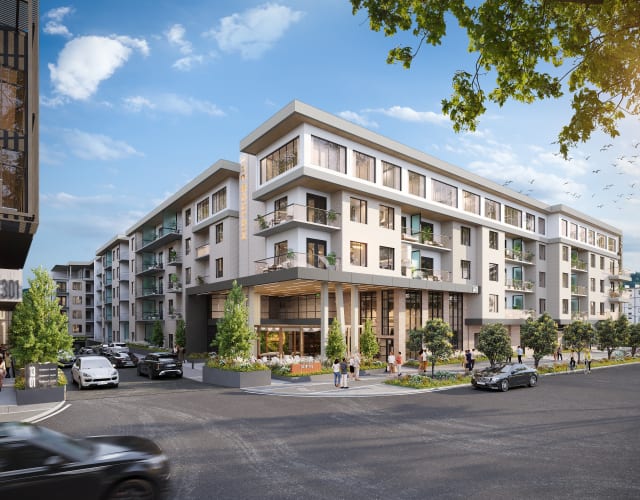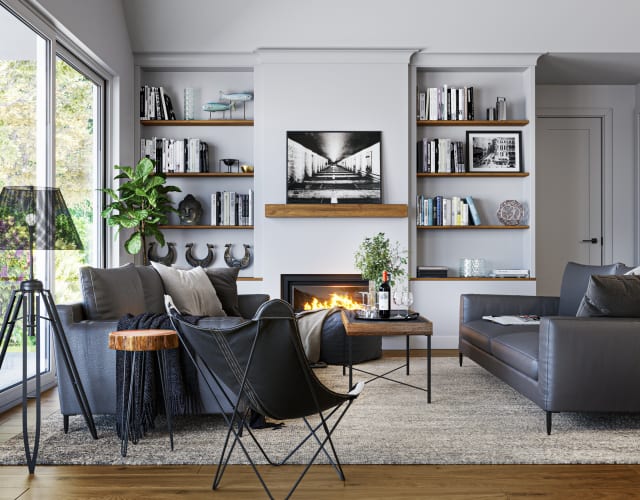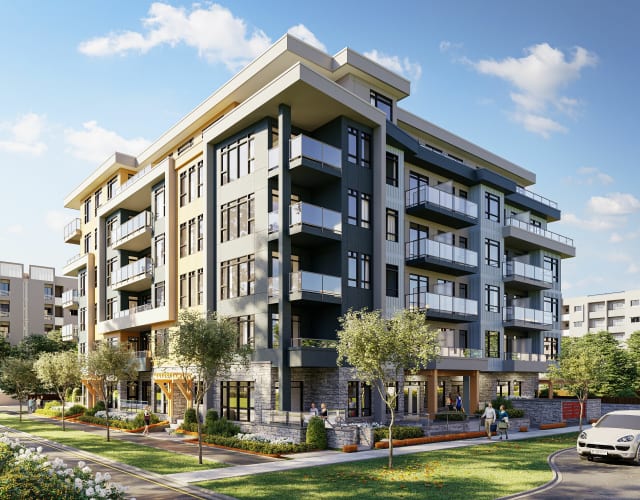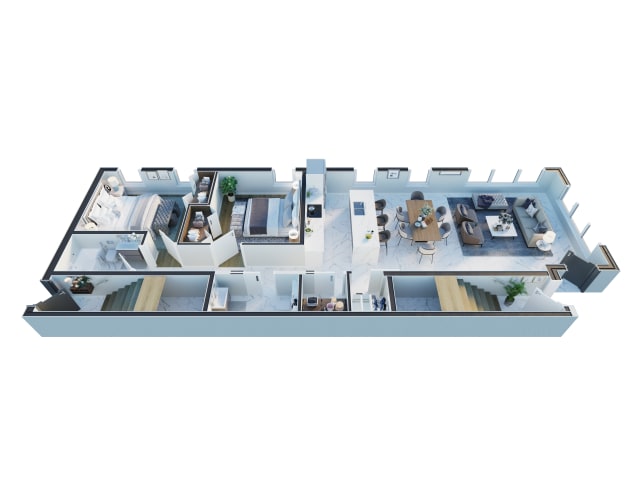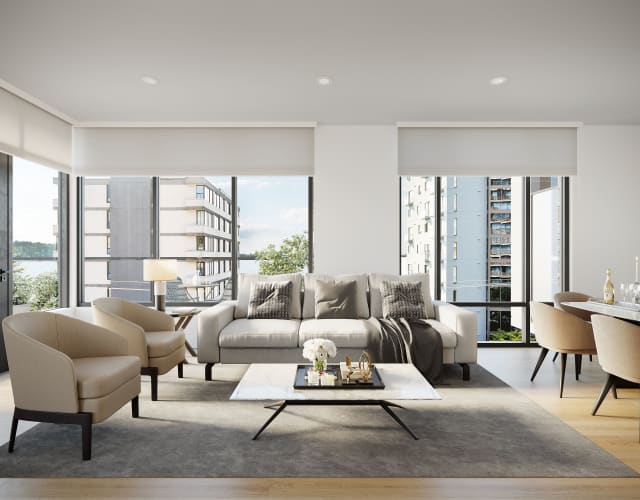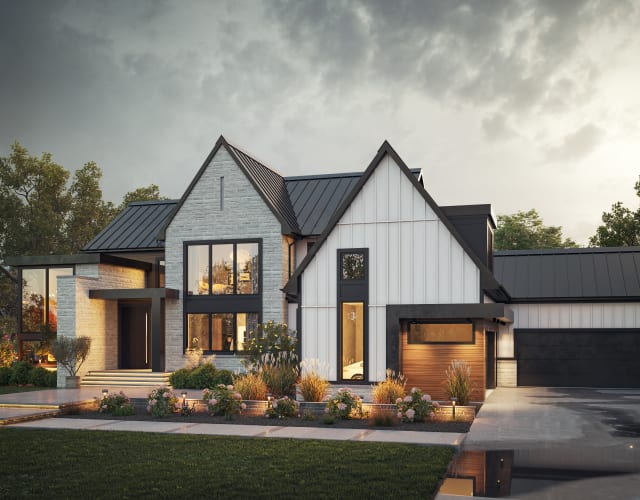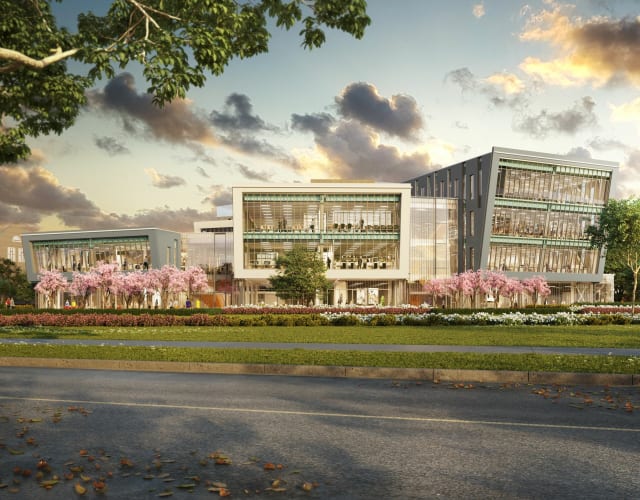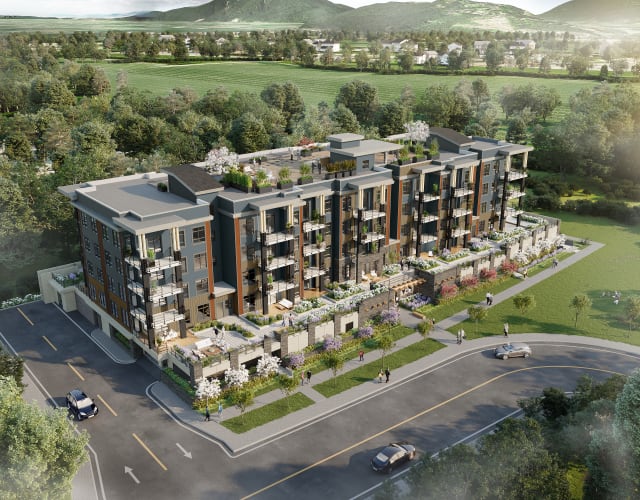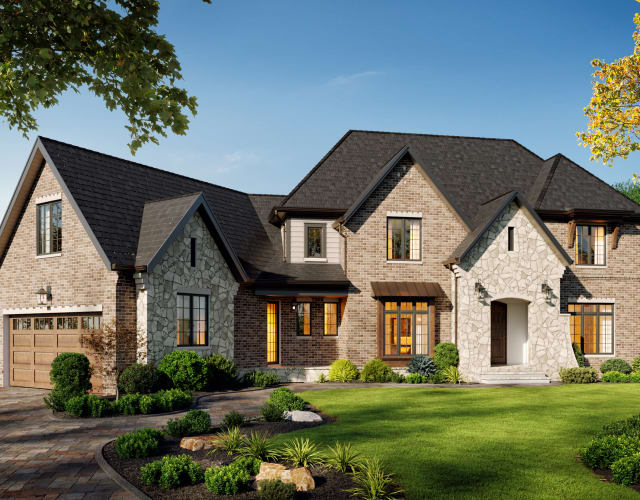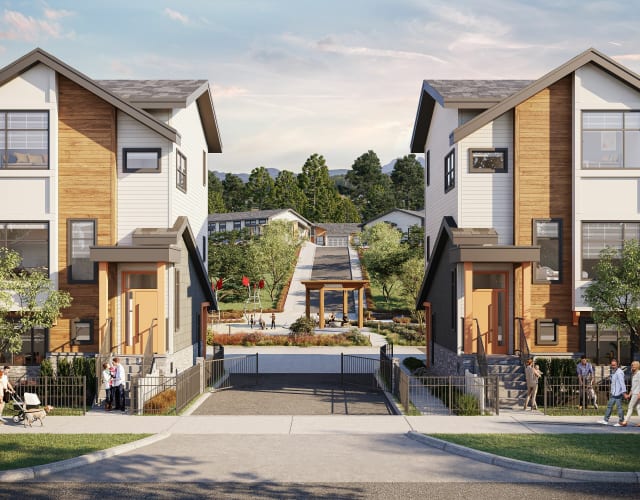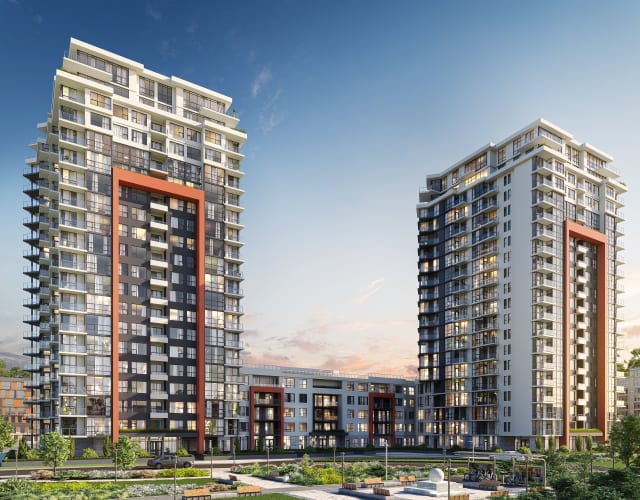Transparency in Design: Architectural Rendering for Optimal View Corridor Integration
by RealSpace
View corridors play a crucial role in architecture, shaping the visual experience of a space and connecting people with their surroundings. These carefully planned paths ensure unobstructed views of significant landmarks, natural features, or cultural sites. Preserving view corridors is essential in urban planning and architectural design to maintain the integrity and beauty of a cityscape. This article will explore how architectural rendering can be a powerful tool in assessing, visualizing, and communicating design proposals for view corridors

Understanding View Corridors
View corridors are defined as designated spaces within a city or landscape that provide unobstructed views of specific points of interest. They can be natural elements like mountains or bodies of water, iconic structures, historical sites, or cultural landmarks. View corridors contribute to a place's overall aesthetics, visual connectivity, and cultural identity. Preserving these corridors ensures that future development respects the existing visual character of a city.
Preserving view corridors requires a comprehensive understanding of their characteristics. These corridors are often defined by width, height, and alignment to protect views from obstructions. By safeguarding view corridors, urban planners and architects can create spaces that celebrate a location's unique features and historical context.
The Role of Architectural Rendering in Visualizing View Corridors

Architectural rendering plays a vital role in visualizing and assessing view corridors. Through 3D modelling and realistic visualization, rendering techniques allow designers to accurately represent proposed buildings and structures to existing view corridors. By incorporating elements such as accurate topography, building heights, and material textures, rendering can simulate the visual impact of recent developments on view corridors.
Architectural rendering helps designers and decision-makers understand how proposed designs align with the preservation of view corridors. It enables them to evaluate design options, experiment with different building heights and placements, and make informed decisions. Through realistic visualizations, stakeholders can assess the impact of new structures on the visual harmony and integrity of the surrounding environment.
Architectural rendering is a valuable tool in preserving and integrating view corridors in urban planning and architectural design. By harnessing the power of visualization, designers can accurately assess the impact of recent developments on view corridors and make informed decisions. The ability to simulate and communicate the visual experience of a space helps foster a sense of connection between people and their surroundings. By embracing architectural rendering, designers can ensure the preservation of view corridors, create harmonious urban environments, and enhance the overall visual experience for residents and visitors alike.
Enhancing Design Considerations with Architectural Rendering
Architectural rendering also enhances design considerations with view corridors. By utilizing rendering techniques, designers can assess the impact of buildings on view corridors and explore different design options to optimize view corridor preservation.
Through architectural rendering, designers can accurately assess the visual impact of buildings on view corridors. By placing the proposed structures within the rendering, designers can analyze how the height, massing, and placement of the building affect the sight lines. This enables them to make informed decisions about design adjustments to preserve the integrity and visibility of the view corridor.
Architectural rendering allows designers to evaluate different design options. By creating multiple renderings with various design iterations, designers can compare and analyze how different approaches affect the view corridor. This flexibility in rendering enables designers to explore alternative design solutions that better integrate with and enhance the view corridor.
Architectural rendering also encourages a holistic approach to design, considering the relationship between the proposed architecture and the surrounding environment. Through rendering, designers can simulate how the building will interact with the landscape, existing structures, and natural elements. This understanding enables them to create designs that harmonize with the context and contribute positively to the view corridor experience.
In conclusion, architectural rendering plays a crucial role in visualizing and assessing the impact of proposed buildings on view corridors. By providing realistic visualizations, rendering facilitates effective communication among stakeholders and enables informed decision-making. Rendering enhances design considerations by allowing designers to evaluate the impact of buildings on view corridors and explore different design options. By leveraging architectural rendering, designers can create designs that optimize view corridor preservation and seamlessly integrate with the surrounding environment.
Communicating View Corridor Designs to Stakeholders
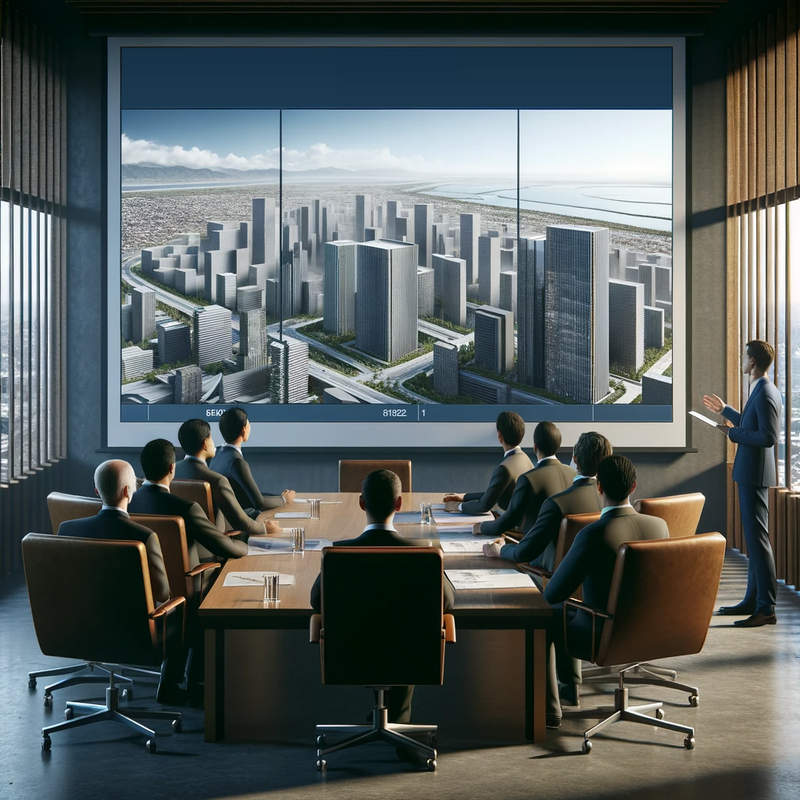
Architectural rendering is a powerful tool for communicating view corridor designs to stakeholders, including clients and decision-makers. It enables designers to convey the importance of view corridors, present design proposals, and show the visual impact of proposed buildings on these valuable sightlines.
Regarding view corridors, architectural rendering becomes a persuasive medium to convey the significance of preserving these visual connections. By creating realistic renderings that showcase the existing view corridor alongside the proposed design, architects can effectively communicate the value of these sightlines. Clients and decision-makers can visually understand the impact that the proposed building will have on the view corridor and appreciate the importance of preserving it.
In addition, architectural rendering allows designers to present design proposals and alternatives for view corridor protection. They can create different renderings that explore various design approaches, such as adjusting the height, massing, or placement of the building to minimize the obstruction to the view corridor. Through these renderings, designers can visually show the proposed solutions and their benefits in maintaining the integrity of the view corridor.
Architectural rendering also helps stakeholders to visualize the visual impact of proposed buildings on view corridors. By accurately representing the design's scale, materials, and context, rendering allows viewers to immerse themselves in the virtual environment and experience how the proposed building interacts with the surrounding landscape and sightlines. This visual demonstration creates a tangible understanding of the project's effect on the view corridor, enabling informed decision-making.
Case Studies: Successful Implementation of Architectural Rendering for View Corridors
Many real-life examples show the successful implementation of architectural rendering in assessing and protecting view corridors. These case studies highlight how rendering has influenced decision-making and design outcomes.
One such case study involves a proposed development near a scenic coastal area with a prominent view corridor. By utilizing architectural rendering, the design team could create realistic visualizations that showcased the proposed building's impact on the view corridor. These renderings played a crucial role in discussions with stakeholders, including local authorities and community members. The visual representation enabled constructive dialogues, leading to design modifications that preserved the view corridor while still achieving the project's objectives.
In another case study, an architectural firm used rendering to analyze the visual impact of a proposed high-rise building on a historically significant view corridor in a city centre. By creating accurate renderings, the firm could assess the potential obstruction to the view corridor. The renderings served as a basis for productive discussions with urban planners, heritage authorities, and community groups. The insights gained from the renderings influenced the design development, resulting in a changed design that respected the view corridor's historical and cultural value.
Overcoming Challenges in Architectural Rendering for View Corridors
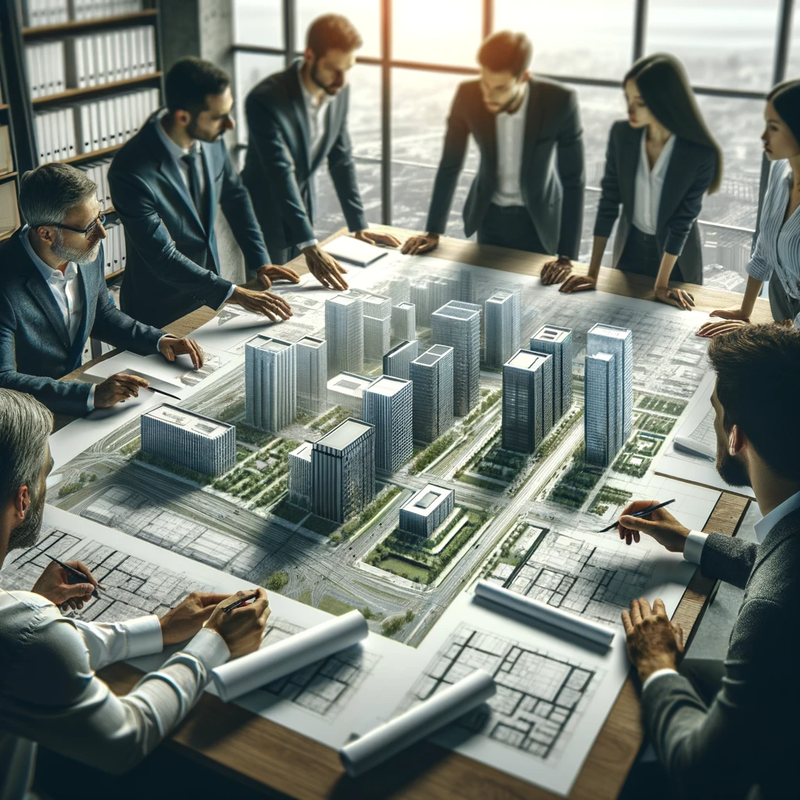
Architectural rendering for view corridors comes with its challenges. Accuracy, scale, and realistic representation are crucial factors to consider in creating compelling visualizations.
Addressing the challenge of accuracy involves ensuring that the rendering accurately represents the view corridor and the proposed design. Careful attention should be given to the site context, topography, and existing structures to create an authentic representation. Using accurate measurements and detailed digital modelling techniques is essential in achieving precise renderings.
Another challenge lies in accurately representing the scale of the proposed building within the rendering. The size and proportions of the building must be proportionate to the surrounding environment and existing structures to provide an accurate depiction. Proper scaling techniques and accurate modelling are necessary to create a convincing representation.
Realistic representation is vital in architectural rendering communications for the visual impact on view corridors. Advanced rendering techniques, such as photorealistic lighting and material rendering, can enhance the realism of the visualizations. Attention to detail in terms of materials, textures, and lighting conditions can significantly improve the quality and believability of the rendering.
To effectively communicate the visual impact of view corridors using rendering techniques, strategies such as interactive presentations or virtual reality experiences can be employed. These methods allow stakeholders to explore the renderings from different viewpoints and comprehensively understand the proposed design's impact on the view corridor.
In conclusion, architectural rendering is a powerful tool for communicating view corridor designs to stakeholders. It enables designers to convey the importance of view corridors, present design proposals, and show the visual impact of proposed buildings. Real-life case studies exemplify the successful implementation of architectural rendering in view corridor assessments and protection. While challenges such as accuracy and realistic representation exist, employing proper techniques and strategies can overcome these hurdles. By effectively leveraging architectural rendering, stakeholders can make informed decisions, engage in productive discussions, and preserve and enhance valuable view corridors.
Overcoming Challenges in Architectural Rendering for View Corridors
Architectural rendering for view corridors comes with its fair share of challenges. However, by addressing these challenges head-on, designers can create compelling visualizations that effectively communicate the visual impact of view corridors.
One of the key challenges in architectural rendering for view corridors is achieving accuracy. Accurately representing the view corridor and the proposed design requires meticulous attention to detail. Designers must consider the site context, topography, and existing structures to ensure the rendering authenticates the view corridor. Employing advanced modelling techniques and using accurate measurements can significantly enhance the accuracy of the rendering.
Another challenge is accurately depicting the scale of the proposed building within the rendering. Scaling is crucial to provide a realistic representation of how the building will interact with the view corridor. Proper scaling techniques and careful consideration of proportions are essential to ensure that the rendering accurately reflects the size and impact of the proposed structure on the sightline.
Realistic representation is paramount in architectural rendering for view corridors. To communicate the visual impact effectively, the rendering should be as realistic as possible. Attention to detail in terms of materials, textures, lighting conditions, and environmental factors is crucial. By employing advanced rendering techniques, such as photorealistic lighting and material rendering, designers can enhance the realism of the visualizations and accurately convey the visual impact of the proposed building on the view corridor.
Using rendering techniques, strategies to effectively communicate the visual impact of view corridors include interactive presentations and virtual reality experiences. Interactive presentations allow stakeholders to explore the rendering from different viewpoints, giving them a comprehensive understanding of how the proposed design will impact the view corridor. Virtual reality experiences take this a step further by immersing stakeholders in a virtual environment, enabling them to experience the view corridor and the proposed building more realistically and engagingly. These strategies help stakeholders visualize and comprehend the visual impact, fostering productive discussions and informed decision-making.
Collaboration with Urban Planners and Stakeholders
Preserving view corridors requires collaboration between architects, urban planners, and stakeholders. These parties' collective efforts and input are essential in ensuring that view corridors are protected and enhanced.
Architectural rendering serves as a valuable tool for collaborative decision-making and consensus-building. By providing realistic visualizations, rendering facilitates effective communication among architects, urban planners, and stakeholders. It enables these parties to have a shared understanding of the visual impact of the proposed building on the view corridor. Through rendering, stakeholders can actively take part in the design process, express their concerns, and contribute to finding solutions that preserve the integrity of the view corridor.
Collaboration with urban planners is crucial in view corridors. Urban planners possess expertise in urban design and land-use planning, and they can provide valuable insights and guidance on view corridor preservation strategies. By working closely with urban planners, architects can ensure that their design proposals align with the broader urban planning goals and objectives, including the protection of view corridors.
Involving stakeholders, such as community members and local authorities, in the decision-making process is vital to ensure the preservation of view corridors. Architectural rendering serves as a bridge for effective communication and engagement with stakeholders. Through visualizations, stakeholders can visualize the impact of the proposed building and actively take part in discussions and decision-making. This collaborative approach fosters a sense of ownership and consensus, leading to design solutions that balance the needs of the project while respecting the significance of the view corridor.
Conclusion

Addressing the challenges of accuracy, scale, and realistic representation is crucial in architectural rendering for view corridors. By employing strategies such as interactive presentations and virtual reality experiences, designers can effectively communicate the visual impact of view corridors. Collaboration with urban planners and stakeholders is essential in preserving and enhancing view corridors. Architectural rendering is a tool for collaborative decision-making and consensus-building, enabling effective communication and stakeholder engagement. By overcoming these challenges and fostering collaboration, designers can successfully navigate the complexities of view corridor design and create solutions that balance the needs of the project with the preservation of view corridors.
In conclusion, architectural rendering plays a vital role in visualizing, assessing, and communicating the impact of view corridors. By utilizing architectural rendering, designers can effectively convey the significance of view corridors to clients and decision-makers, present design proposals, and show the visual impact of proposed buildings.
The benefits of architectural rendering for view corridors are many. It enhances design considerations by allowing designers to assess the impact of buildings on view corridors and explore different design options. It facilitates communication with stakeholders, enabling them to understand and appreciate the value of view corridors. Architectural rendering streamlines the decision-making process by providing a clear visual representation of proposed designs.
Real-life case studies show the successful implementation of architectural rendering in view corridor assessments and protection, influencing decision-making and design outcomes. Overcoming challenges such as accuracy, scale, and realistic representation is possible through advanced rendering techniques and effective communication strategies.
Collaboration between architects, urban planners, and stakeholders is essential in preserving and enhancing view corridors. Architectural rendering serves as a tool for collaborative decision-making and consensus-building, enabling effective communication and engagement. By integrating architectural rendering into the design process, architects and urban planners can contribute to the creation of sustainable and visually appealing urban environments that respect and celebrate view corridors.
In conclusion, architects and urban planners should leverage the power of architectural rendering to optimize the preservation and enhancement of view corridors. By embracing this technology, they can effectively communicate the value of view corridors, engage stakeholders, and make informed decisions that prioritize the visual integrity of the built environment. Integrating architectural rendering into the design process is crucial for creating sustainable and visually appealing urban environments that harmoniously coexist with their surroundings. Let us embrace architectural rendering as a valuable tool in our quest to design cities that embrace the beauty and significance of view corridors.
